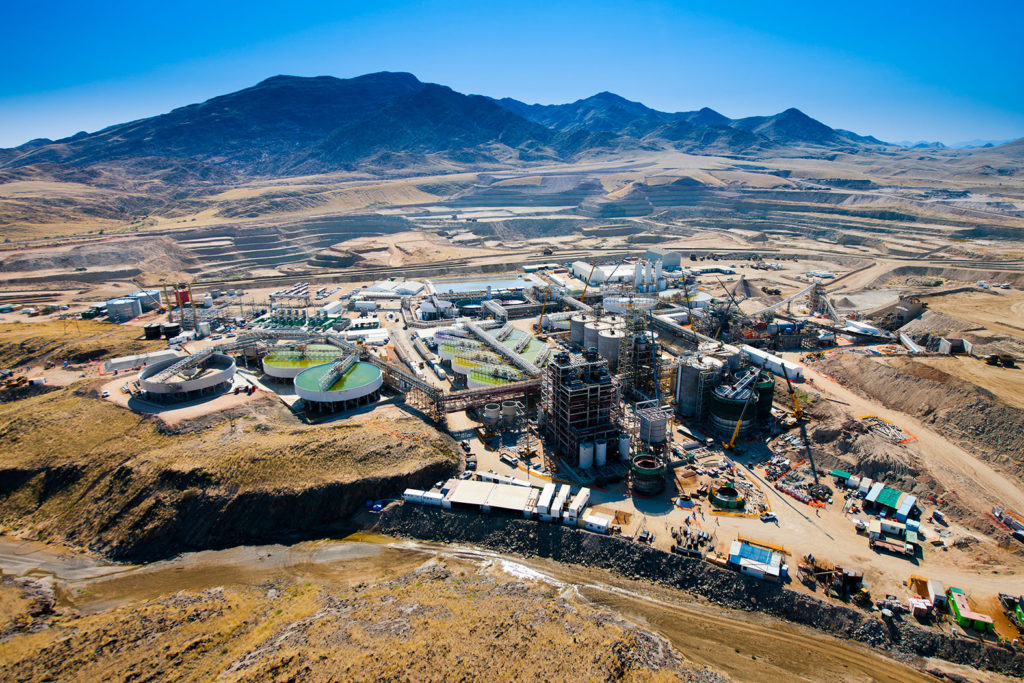Paladin Energy Ltd has announced the results of the Langer Heinrich Mine Restart Plan, which marks the completion of an extensive work package aimed at “delivering a reliable mine restart to bring the globally significant Langer Heinrich Mine back into production under the right uranium pricing environment.”
Paladin owns 75% of the Langer Heinrich mine, located in Namibia. The remaining 25% is owned by CNNC Overseas Uranium Holdings Limited, a subsidiary of China National Nuclear Corporation (CNNC), a leading Chinese nuclear agency. The Langer Heinrich mine commenced operations in 2007 and has produced and sold over 43 Mlb of U3O8 to date. The mine was transitioned into care and maintenance in August 2018 due to the sustained low uranium price.
The Restart Plan has confirmed a 17-year mine life for Langer Heinrich with peak production of 5.9 Mlb U3O8 per annum for 7 years and it outlines three distinct operational phases being ramp-up (Year 1), Mining (Year 2-8) and Stockpile (Year 9-17). The utilisation of stockpile material in the ramp-up phase greatly reduces operational start up risk and provides a strong platform for the operation to move toward nameplate capacity within a 12-month period.
Paladin CEO, Ian Purdy said: “The completion of the Langer Heinrich Mine Restart Plan is a significant step forward for the Company and completes the vast amount of study work undertaken over the past 18 months. The operational and economic parameters identified in the chosen restart plan show the strategic significance of the Langer Heinrich asset and highlight the potential economic returns that can be delivered under the right Uranium price environment. Paladin will continue to refine and progress work packages under The Restart Plan and I look forward to updating the market on our ongoing activities.”
The plan confirms that Langer Heinrich can be brought back into production and deliver reliable operations with a pre-production cash expenditure of $81 million (100% basis). The expenditure is separated into two components. First is Operational Readiness ($34 million) relating specifically to working capital and other cash expenditure required to restart baseline operations at Langer Heinrich. The operational readiness expenditure will focus on performing maintenance on plant and infrastructure ($13 million); replenishing reagents, purchasing spare parts and other working capital ($14 million); and workforce recruitment, mobilisation and training. It also covers the mobilising of key contractors, including the mining contractor ($7 million).
The other big spend is a discretionary capital investment to improve plant runtime ($47 million). This is focused on improving plant reliability and runtime to 95% (historic levels were around 85%) by targeted expenditure on key areas of the process plant including a product drying and packaging facility upgrade reducing product volumes and transport weight ($14 million); a leach feed surge tank to decouple crushing from leach and increasing water storage mitigating production interruption when primary water supply is disrupted ($7 million); a process control upgrade and process equipment changes to increase stability and control ($6 million); addressing known asset integrity issues – piping, structural and electrical ($16 million); and the tailings dam capacity being increased to meet future production ($4 million).
Specifically the process plant work includes leach heating and mixing upgrades to improve extraction, additional water storage to prevent interruptions from external water supplies, a thickener and pumping upgrade to maximise density and a second Hydrosort fluidised-bed separator plant to improve metal selectivity for leaching. The Hydrosort is supplied by US company Phoenix Process Equipment and is a hydraulic classifier and density separator utilising a fluidised bed of slurry to separate materials by density or to classify materials by particle size. A mineral slurry is fed into the top of the unit by conveyor belt, hydrocyclone or other means. The feed material encounters an automatically generated fluid bed formed by particles having the actual separation cut size.
Looking ahead there are further process innovations that could be applied after restart and operational stability have been achieved. Paladin declared a maiden vanadium Mineral Resource Estimate in 2019. As part of a reagent recycling project (membrane technology) there is potential for vanadium to be extracted and sold.
The company will also look at reagent recycling using Paladin’s patented nanofiltration technology. Paladin has a successful track record of deploying membrane technology to recycle reagents such as bi-carbonate and carbonate. A patent for this has been granted.
Increased ore beneficiation could allow more uranium metal to leach and give opportunities to increase low grade processing margins from Year 8 onwards. Paladin says it is looking at ore sorting (radiometric, colour), a beneficiation scrubbing increase/expansion and flotation options. Other possibilities include a thickening upgrade using HIG equipment or resin in pulp technology. Tails thickening would increase reagent and water recycling.











